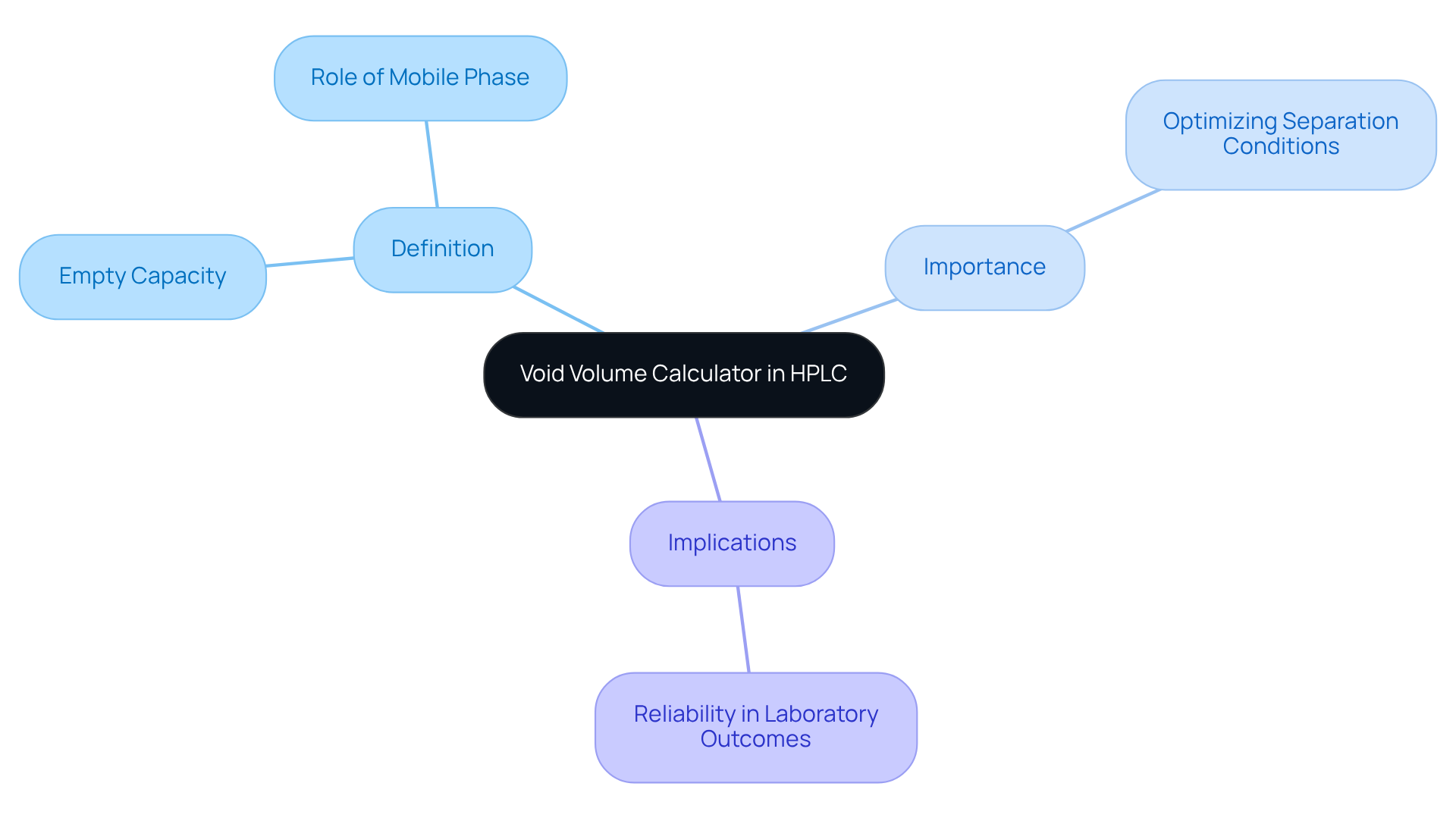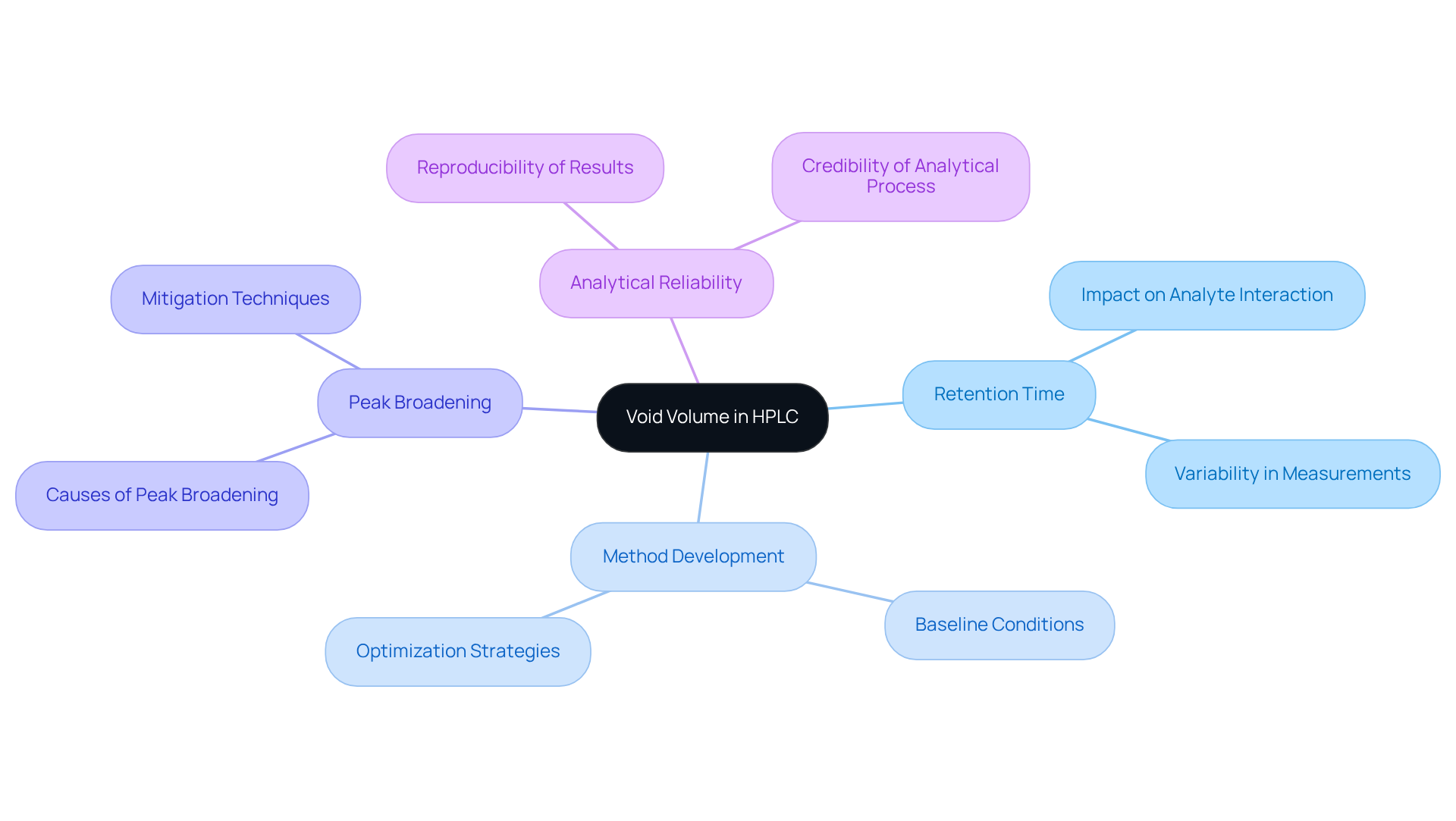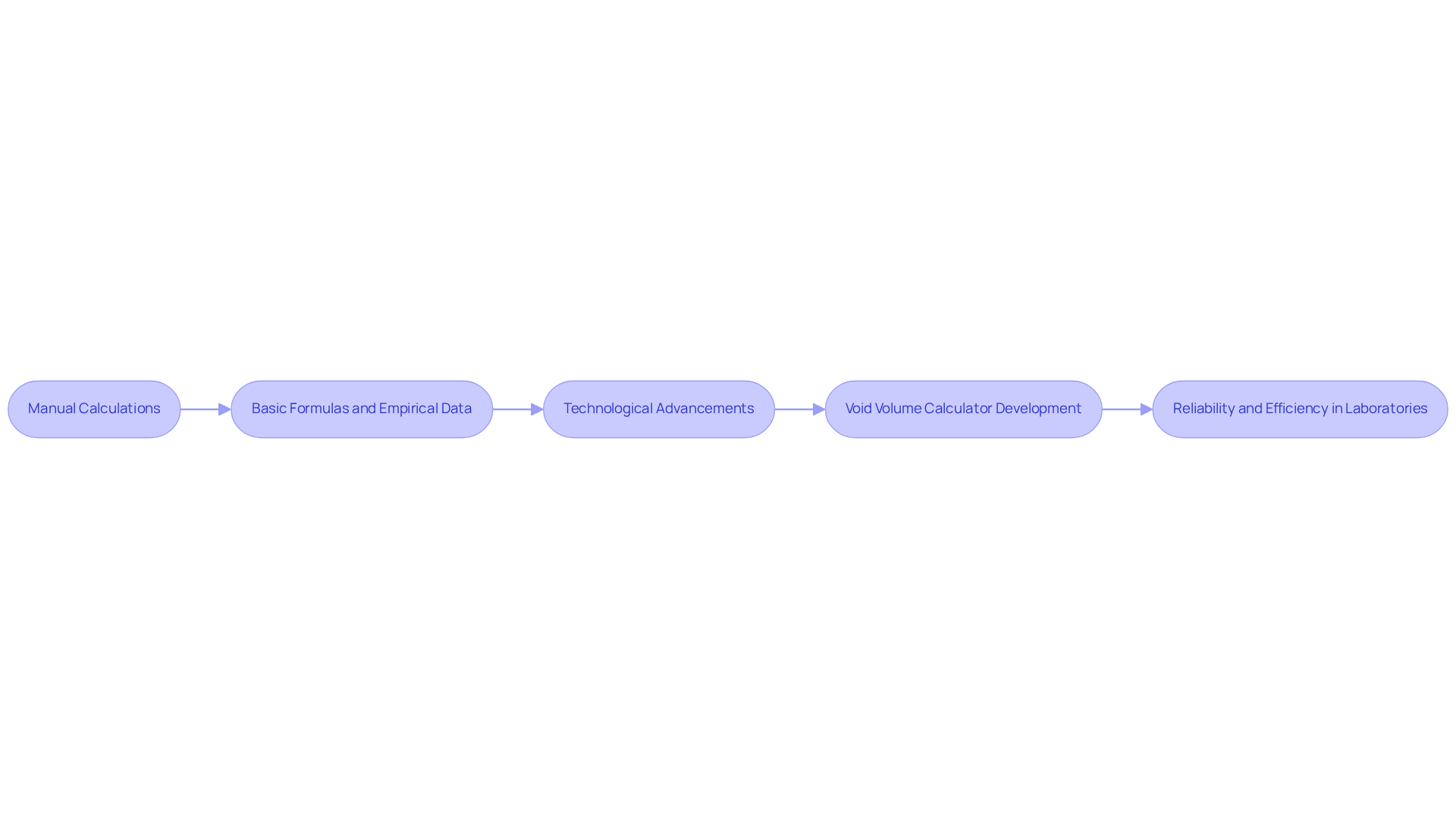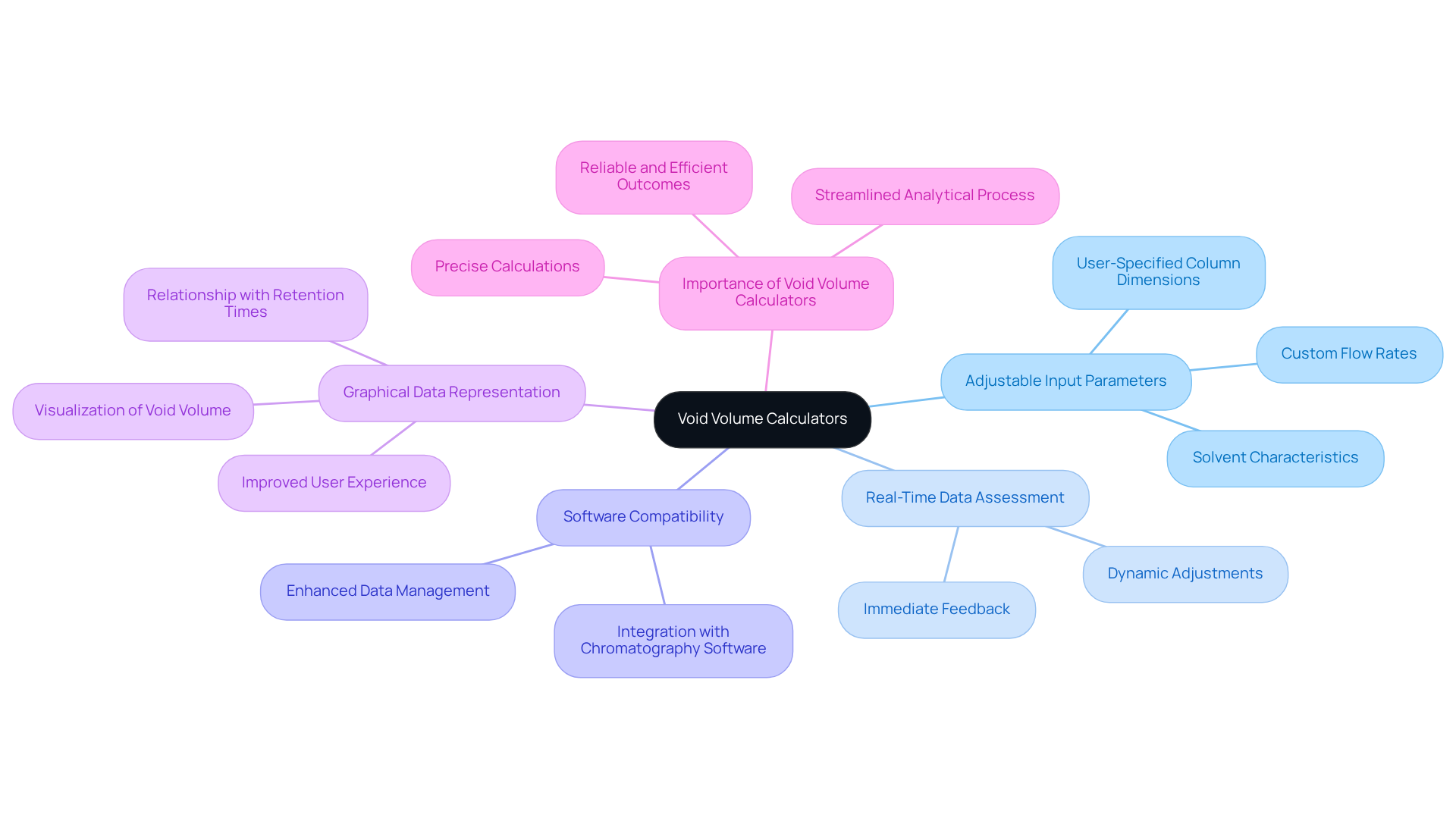Overview
The void volume calculator in HPLC analysis is indispensable for determining the volume of mobile phase that does not interact with the stationary phase. This determination is crucial for evaluating chromatographic efficiency. Accurate calculations using this tool significantly enhance the reliability and reproducibility of analytical results. By addressing challenges such as peak broadening and retention time fluctuations, the calculator reinforces the credibility of laboratory outcomes. In essence, its role in ensuring precise measurements cannot be overstated, making it a vital component in high-quality scientific analysis.
Introduction
In the intricate world of high-performance liquid chromatography (HPLC), the concept of void volume stands as a pivotal yet often overlooked element. The void volume calculator emerges as a critical tool, empowering analysts to ascertain the unoccupied space within the column, a factor that directly influences the efficiency of chromatographic separations. As the demand for precision in analytical results intensifies, grasping the nuances of this calculator becomes essential.
How can mastering the use of void volume calculators not only transform the reliability of HPLC analyses but also effectively address the common challenges faced in the laboratory?
Define Void Volume Calculator in HPLC
The void volume calculator in high-performance liquid chromatography (HPLC) plays a crucial role in determining the quantity of mobile phase within the column that remains unengaged with the stationary phase. Understanding this concept is essential for evaluating the efficiency and performance of chromatographic separation processes.
- The empty capacity refers to the volume within the column occupied by the mobile phase in the absence of a sample.
- Accurately determining this measurement is vital for optimizing separation conditions and ensuring consistency in analytical results when utilizing a void volume calculator.
- Ultimately, precise calculations foster enhanced reliability in laboratory outcomes, reinforcing the importance of high-quality scientific instruments.

Contextualize the Role of Void Volume Calculators in HPLC Analysis
In HPLC analysis, the concept of empty space is paramount in establishing the retention time of analytes. The void volume calculator is instrumental in determining baseline conditions that are vital for method development and validation.
By grasping the intricacies of empty space, analysts can gain a deeper understanding of how various compounds interact with the stationary phase, which is essential for optimizing separation conditions.
Moreover, accurate calculations of empty space using a void volume calculator are critical for addressing challenges related to peak broadening and fluctuations in retention time. This precision ensures that are not only reliable but also reproducible, reinforcing the credibility of the analytical process.

Trace the Evolution and Importance of Void Volume Calculators
The concept of empty space in chromatography has evolved significantly since the inception of (HPLC). Initially, calculations were conducted manually, relying on basic formulas and empirical data. However, technological advancements have led to the development of the void volume calculator, which integrates sophisticated algorithms and software to improve accuracy and usability.
These advanced devices facilitate real-time modifications and simulations, establishing themselves as indispensable instruments in contemporary laboratories. The importance of these tools is paramount; they not only enhance the efficiency of the chromatographic process but also bolster the reliability of analytical results.

Identify Key Features and Functions of Void Volume Calculators
Void capacity estimators are essential tools that provide functionalities such as adjustable input parameters, real-time data assessment, and compatibility with chromatography software. By allowing users to input specific column dimensions, flow rates, and solvent characteristics, these estimators function as a void volume calculator, enabling precise calculations of the empty space within the system.
Furthermore, many modern calculators enhance user experience with of the data, which facilitate the visualization of the relationship between void volume and retention times. Such functionalities not only streamline the analytical process but also significantly enhance the accuracy of results.
Consequently, these estimators are vital for laboratories engaged in HPLC analysis, emphasizing their importance in achieving reliable and efficient outcomes with the use of a void volume calculator.

Conclusion
The void volume calculator stands as an essential instrument in high-performance liquid chromatography (HPLC), quantifying the mobile phase that remains unaffected by the stationary phase within a column. This measurement is crucial for optimizing chromatographic separations and ensuring consistent analytical results. By accurately determining void volume, laboratories enhance the reliability of their outcomes, reinforcing the significance of high-quality scientific instruments in analytical chemistry.
Key insights regarding the role of void volume in HPLC analysis have been presented throughout this article. The importance of understanding the empty space in relation to retention times and the interaction of analytes with stationary phases has been emphasized. Furthermore, the evolution of void volume calculators—from manual calculations to sophisticated, software-integrated devices—highlights their growing significance in modern laboratory practices. These advancements not only improve accuracy but also facilitate real-time adjustments that enhance the overall efficiency of chromatographic processes.
Reflecting on the critical role of void volume calculators, it is evident that their usage is fundamental for achieving reliable and reproducible analytical results. Laboratories engaged in HPLC analysis should prioritize the integration of these calculators into their workflows. By doing so, they can ensure that their methodologies are effective and aligned with the evolving standards of scientific rigor and precision. Embracing these tools will ultimately contribute to advancing the field of chromatography and enhancing the quality of analytical outcomes.




